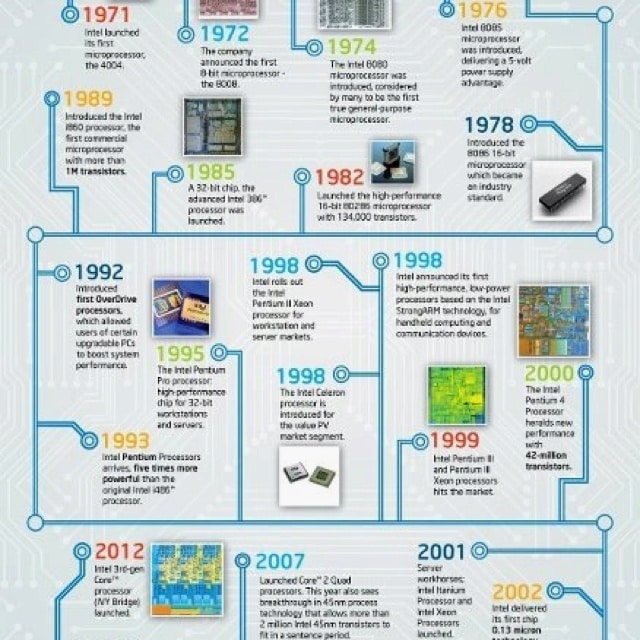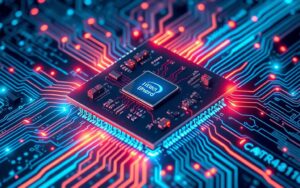Table of Contents
In the chronicles of technological innovation, the Evolution of Computer Processors stands out as a monumental saga of human achievement. It’s a journey that commences with the simple arithmetic computations of early machines and weaves through a landscape punctuated by disruptive innovations, scientific challenges, and boundary-pushing milestones. The evolution of these silicon brains – from the rudimentary designs of early vacuum tubes to the sophisticated architectures of today’s microprocessors – tells a story not only of technological advancement but also of societal transformation. They’ve been central to the digital revolution, changing the way we work, communicate, play, and live. The computer processor, often referred to as the heart of the computer system, is a marvel of engineering. To truly grasp its significance, one can delve into its historical lineage on Wikipedia, where its storied journey is meticulously chronicled. As we navigate this exploration, it becomes evident how intertwined the evolution of processors is with the broader tapestry of human progress and our ceaseless drive to harness the power of computation.
1. Dawn of Digital Computing: The Vacuum Tubes and Relays Era in the Evolution of Computer Processors (1930s – 1950s)
In the initial chapters of The Evolution of Computer Processors, vacuum tubes and relays stood as the pillars of computational technology. These were the times when the ENIAC, among other machines, became the face of this era, providing a glimpse into the future potential of electronic computing. The scale of these devices was awe-inspiring, often occupying entire rooms, with countless tubes humming and flickering as calculations progressed. Despite their pioneering significance, these behemoths were notorious for their high energy consumption and heat generation. Breakdowns and maintenance requirements were frequent, reflecting the infancy of electronic computing. However, as a testament to the relentless pursuit of advancement in the Evolution of Computer Processors, these challenges only intensified the push towards finding more efficient, reliable, and compact computing solutions.

2. Transistors: The Compact Powerhouses Redefining the Evolution of Computer Processors (1950s – 1960s)
When one dives deeper into the Evolution of Computer Processors, the transistor era stands out as a transformative epoch. Born in 1947 from the labs of Bell Telephone Laboratories, the invention of the transistor was nothing short of revolutionary. These diminutive devices offered a seismic shift away from the cumbersome vacuum tubes, presenting a more compact, energy-efficient, and reliable approach to electronic computation. Initially fabricated from germanium, and subsequently from silicon, these transistors rapidly became the new building blocks for computer processors. Systems like the IBM 7090 were emblematic of this shift, demonstrating the enormous potential of transistor-based computing. This period not only witnessed rapid advancements in processor design and capability but also foreshadowed the rise of a new age: The microprocessor era, which would further accelerate the Evolution of Computer Processors and reshape the world of technology.

3. Integrated Circuits and the Advent of Microprocessors: A Seminal Moment in the Evolution of Computer Processors (1970s – 1980s)
Venturing further into the Evolution of Computer Processors, the 1970s and 1980s witnessed groundbreaking developments that revolutionized the landscape of computing. The birth of the integrated circuit, stemming from the genius of Jack Kilby and Robert Noyce, became the linchpin of this era. These circuits amalgamated numerous transistors into a singular chip, an innovation that exponentially escalated the power of computers while simultaneously shrinking their size.
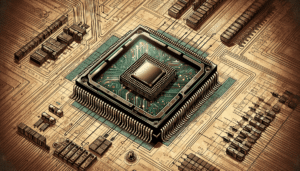
But the true marvel of this period was the commercial introduction of the microprocessor. Heralded by Intel’s 4004 in 1971, this compact unit packed an entire CPU onto a single chip, thereby democratizing computing. With this leap, computers transitioned from being exclusive to research facilities and corporations to becoming household staples. This era in the Evolution of Computer Processors laid the foundation for the tech-driven world we inhabit today, marking a monumental shift from mainframes to personal computers.
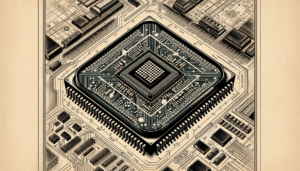
4. Parallel Processing and the Era of Multi-Core Systems: Modernizing the Evolution of Computer Processors (2000s – 2010s)
In the ever-unfolding narrative of the Evolution of Computer Processors, the 2000s and 2010s heralded an era where raw speed began to hit physical and thermal barriers. Instead of merely ramping up clock speeds, the industry innovated by introducing multi-core processors. This architectural shift meant embedding multiple processor cores within a single chip, thus allowing computers to handle multiple tasks in tandem.
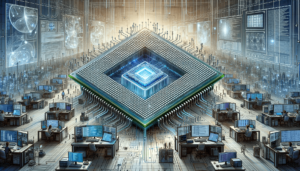
The impetus behind this was not just the need for speed but also for energy efficiency and heat management. As software began to demand more resources and multitasking became the norm, these multi-core systems provided an elegant solution, offering enhanced performance without significantly increasing power consumption. This phase in the Evolution of Computer Processors underlined the importance of innovation in the face of challenges, propelling the tech world into a new dimension of efficiency and capability.
5. Quantum Computing: The Frontier of the Evolution of Computer Processors (2020s – Present)
As the timeline of the Evolution of Computer Processors progressed into the 2020s, a new horizon emerged: Quantum Computing. Unlike classical processors that use bits as their smallest unit of data, quantum processors harness qubits, which can represent both 0 and 1 simultaneously due to superposition. This allows quantum computers to process vast amounts of information concurrently, offering potential solutions to problems that are currently beyond the reach of classical machines.

While still in its nascent stages, quantum computing has already shown promise in fields like cryptography, material science, and complex system simulations. Companies and institutions worldwide are heavily investing in research and development, hoping to harness its unparalleled processing capabilities. This chapter in the Evolution of Computer Processors hints at a paradigm shift in computational power, where the boundaries of what’s computationally possible are being radically redefined.
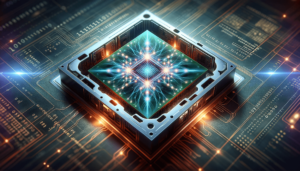
6. Neuromorphic and Biological Computing
Continuing our journey through the Evolution of Computer Processors, we now find ourselves on the cusp of intertwining biology with technology. Neuromorphic computing, inspired by the workings of the human brain, aims to replicate neural structures and operations in silicon form. These processors don’t just process information; they can learn and adapt, providing the foundation for advanced artificial intelligence and machine learning systems.
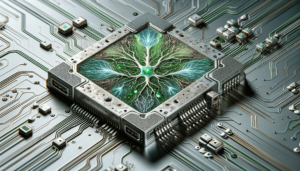
On the other hand, biological computing seeks to use living cells, especially DNA, as computational devices. The idea of encoding data into DNA strands and utilizing biological processes to perform computation presents a fusion of biology and technology that was once the stuff of science fiction. As these exciting innovations unfold, they further enrich the tapestry of the Evolution of Computer Processors, reminding us that the journey of computational evolution is far from over and brimming with possibilities.
`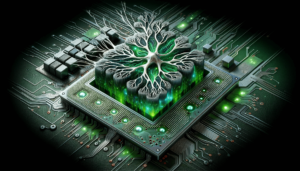
Conclusion
The intricate tapestry of the Evolution of Computer Processors is a testament to mankind’s unyielding ambition and ingenuity. Beginning with the most basic computational tools like vacuum tubes, humanity embarked on a quest to continually refine and redefine the meaning of processing power. Each phase of this evolution, be it the advent of transistors or the quantum leaps heralded by integrated circuits, has profoundly impacted not just the realm of technology but also society at large.
Our reliance on these ever-evolving processors goes beyond just gadgets and devices. They’ve revolutionized industries, spawned entirely new fields of study, and played a pivotal role in global connectivity and the democratization of information. They are, in essence, the silent protagonists in the story of modern civilization.
As we stand on the threshold of innovations like quantum, neuromorphic, and biological computing, it’s not just about faster chips or more efficient designs. It’s about the blending of disciplines, the convergence of the organic and digital, and the reimagining of what’s possible. The future promises not just iterative improvements but paradigm shifts, where the very fabric of computing could undergo profound transformations.
Looking back at the journey so far, it evokes a sense of wonder. But it’s equally crucial to recognize that with great power comes great responsibility. As processors become more advanced, ethical considerations around technology, its applications, and its implications become paramount.
In conclusion, the Evolution of Computer Processors isn’t merely a historical account of technological advancements. It’s a narrative of human potential, a story that underscores our ability to dream, innovate, and shape the future. And as this journey continues, it beckons us to participate, ponder, and propel ourselves toward a future filled with endless possibilities.


